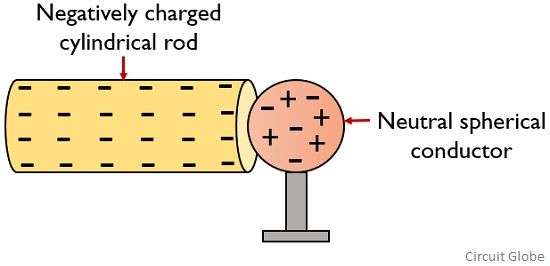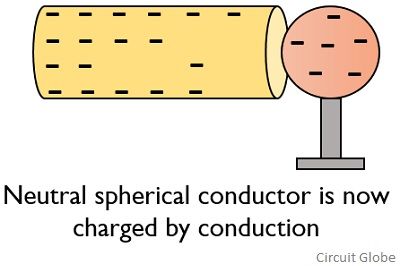The major difference between conduction and induction is that conduction allows the charging of a neutral body with a charged body by forming a direct contact with it. While induction is the process of charging a neutral body by a charged body without making any direct contact.
Both conduction and induction refers to the two different ways that causes charging of neutral bodies. Here we will see what major differentiating factors exist between the two.
Content: Conduction Vs Induction
Comparison Chart
| Basis for Comparison | Conduction | Induction |
|---|---|---|
| Basic | It results in flow of current due to electric field. | It results in flow of current due to change in magnetic field. |
| Arrangement of conductors | It requires direct contact between charged and uncharged conductors. | No direct contact is required between charged and uncharged bodies. |
| Direction of current | The current in both the conductors flows in same direction. | The induced current is opposite in direction as that of actual current. |
| Gradient path | Due to transferring nature of charges, gradient path is required. | Due to inducing nature of charges, gradient path is not required. |
| Amount of charge | Decreases, due to distribution of charges. | Remains constant |
Definition of Conduction
Conduction is a phenomenon of transferring of energy from a charged body to an uncharged body by direct contact.
We know that a current through a conductor flows when a difference in potential exists between its two ends. As due to the difference in potential, the electric field exists across the conductor. This electric field applies electrostatic force on the charges, due to which charges move and the movement of charges generates electric current.
Now the question arises how charges from one body can be transferred to another body?
For this, consider that we have a negatively charged cylindrical rod which is placed in contact with a neutral sphere (having an equal number of electrons and protons).
So, due to direct contact, the current flowing through one conductor (i.e., rod), begins to flow through the neutral body placed in contact as well. This is so because due to direct contact, the field in both the bodies in contact changes simultaneously. Thus charges now starts to drift from one body to another.
This leads flow of current due to conduction in both the bodies.
Definition of Induction
A phenomenon that causes an uncharged body to get electrically charged by placing it near a charged conductor is known as induction. For induction to take place, the two bodies must be placed nearer to each other.
We have already discussed that current in any conductor flows due to the movement of charge carriers. Suppose we have a negatively charged body, so the movement of the charges inside the body generates electric current.
We know that when current flows through a conductor then the magnetic field is produced across it. And according to Faraday when an uncharged body is placed in a region where the magnetic field is present then the electric field gets generated inside it.
More simply we can say charges of opposite polarity present in the charged body get induced to the uncharged body. Thus the generated electric field in the second body causes flow of current through it in the opposite direction.
It is noteworthy here that the magnetic field shows variation according to the change in the electric field of initially charged conductor and so the induced electric field in the other body. Thus in this way, we can say that current flowing to one conductor gets induced in the other conductor placed near to it.
Key Differences Between Conduction and Induction
- Conduction is the process of transferring charges from a charged body to a neutral body. While Induction is the process of inducing the charges on a neutral body by the use of a charged body.
- Conduction needs direct physical contact between the two bodies. However, no physical contact is needed in case of induction, but the two bodies must be placed close to each other.
- In the case of conduction, the current flowing through both bodies have the same direction. Whereas in case of induction, equal current flows through both the bodies but in different directions.
- A potential difference must exist between two bodies for conduction to take place thus requires a gradient path. As no direct contact is maintained at the time of induction thus the gradient path is not needed.
- As the charge gets transferred in case of conduction thus there is a reduction in the amount of overall charge present in the charged body. While in case of induction the charge on the initially charged body remains the same even after inducing, charges of opposite polarity in the other body.
So, this discussion simply concludes that conduction allows the charge flow due to electric field produced inside it. But induction permits flow of charge carriers due to change in magnetic field.




Very nice explanation for clear understanding